#Folklore-based RPG
Explore tagged Tumblr posts
Text
Vaesen: Nordic Horror Roleplaying - Adventure Ideas
🎲 #Vaesen: Nordic Horror Roleplaying: Embark on haunting investigations, unravel dark mysteries, and confront otherworldly creatures in a chilling Nordic setting. #Horror #TTRPG #RPG #FreeLeaguePublishing #YearZeroEngine
Vaesen – [PDF]Embark on haunting investigations, unravel dark mysteries, and confront otherworldly creatures in a chilling Nordic setting with these Vaesen adventure ideas. Step into the Mythic North, a land where real myths come alive. Vaesen – Nordic Horror Roleplaying by Nils Hintze takes you on a chilling journey through a Gothic setting steeped in Nordic folklore. Encounter bloodcurdling…
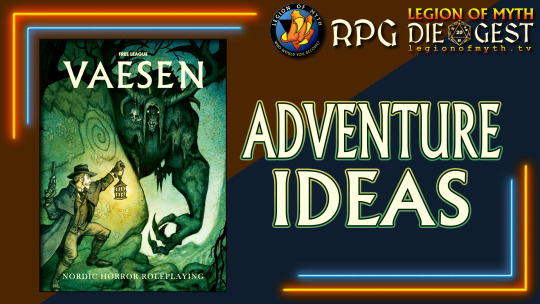
View On WordPress
#Atmospheric roleplaying game#Chilling RPG system#Dark fantasy tabletop#Dark Nordic setting#Folklore-based RPG#Folklore-inspired roleplaying#Gothic folklore RPG#Gothic horror tabletop#Haunting investigations#Haunting tabletop game#Investigative horror game#Mysterious creatures RPG#Mythical creatures game#Mythos investigation game#Nordic horror roleplaying#Nordic mythology RPG#Scandinavian folklore RPG#Supernatural mysteries#Thrilling mystery roleplaying#vaesen rpg
1 note
·
View note
Text

That bloodstained son of Tuoni / struck the man with his sword, struck fear with his hunger. / Threw him to the stream of Tuonela / to the Underworld's underlake. — Kalevala, rune 14, lines 445–8; 451-2.
My rendition of Tuonenpoika, the guardian of the Finnish underworld, Tuonela; This gore-covered son of Tuoni fishes for unwanted visitors downstream, slaying them. He is said to collect the belongings of all the dead flowing down river Tuoni.
#finnish mythology#kalevala#mythology#finnish folklore#tuonenpoika#art#artists on tumblr#digital art#character design#character art#finnish#my art#godkiller#im playing this version of Tuonenpoika as a character in the Godkiller RPG#godkiller RPG#ttrpg#ttrpg art#his colors are based on high iron waters that are common in finnish bogs#as well as rowan and alder trees/berries that are prominent in finnish myth#the only real descriptors about tuonenpoika tell how much he is covered by blood and gore<3
273 notes
·
View notes
Text

Apples Value ●○○○○○ ; Size ●○○○○ Doctors hate them. To make an apple tree fruitful, you have to place a cemetery stone taken on Great Friday on the starting point of the branches.
#an apple a day keeps the doctor away#= people hit by an apple cant be cured by a healer#rpg#the second part of the lore is based on some local folklore i found at the library#i just want to draw regular vegetables and right and search about fantasy stuff on them#a fruit /vegetables handdrawn would be very handy in my kitchen and Duduk Bazaar is a good opportunity to work on it#fruit#market#apple#culinary#fantasy#medieval#item#inventory#prop design#bazaar#ink
7 notes
·
View notes
Text
one subtle but notable shift in TES's writing over the years is in how it understands a party to be structured. this mostly seems relegated to ESO and spinoffs, but it's been increasingly written into canon, so it's prime for rambling about, at least to some extent
or, another post in which toskarin rants about shifts in TES writing and its intent, entirely presented as a stream of consciousness with only a little bit of editing (beware)
(asides are included in [boxes] so you can skip those if you want)
so,
when parties come up in TES lore, because they rarely come up in gameplay (and mind you they sometimes do, but we'll get to that) they tend to be structured less as something that works on a particular gameplay system and more as warbands or small groups. when you look at the structure of groups of notable adventurers, insofar as they appear in the sidelines, it's much closer to something like the fellowship of the ring than a balanced ttrpg party
there ARE a few D&D style parties that crop up, but it's generally assumed that a "party" is less of a formal concept than like, a few people who know each other or a group of cultural figures that need to be in interaction as a function of folklore. beyond that, in the third case, you enter into the territory of warbands and armies by scale, and those obviously don't make much of an appearance in games with entity logic held together by sap and twine
the exception to this that's most notable (imo) is in Shivering Isles, where a party of D&D style adventurers appears for you to torture in your position as a dungeon keeper. this is pretty obviously a skit, but it bears mentioning because it really emphasises how weird it is for that sort of thing to exist in the setting. outside of what the player actually does, people in the setting tend to behave more like characters in a fantasy novel than characters intended explicitly for tabletop gaming
[well, I'd also point out that this is a bit less true for daggerfall and arena, but trying to take those as The Way The World Works in anything past those games is silly, since they literally canonised a time distorting phenomenon that ensures the world doesn't work the same way it used to lmao]
a lot of this comes down to the fact that, on the whole, the player's role as "the adventurer who does RPG stuff" is an anomaly in the setting. most of the other characters who are similarly weird in the setting are like... weird in the way that figures like Fionn mac Cumhaill are weird
anyway, as ESO rolls around, adventurer parties are definitely more of something the writers include in the lore. a party of heroes is a normal thing, or at least not a joke anymore
the obvious manifestation of this is in The Five Companions, who kind of exist in a weird role of modelling what a party of real players might look like, and of course to make that idea less jarring as it's inserted mechanically for the first time in the setting
[before anyone mentions it, I know Battlespire had multiplayer, but that's not what it was. have you played it? it's objective-based and every time it gets brought up I feel insane because everybody seems to lie about having played it. it's like the Moby Dick of computer rpgs. nobody can remember it but everyone's allegedly played it. it had more in common with Unreal Tournament than anything. it had a capture the flag mode]
the Five Companions are, fundamentally, an MMORPG party, down to their roles, but they are written with the sort of backstories you'd expect from a typical D&D table. they stand out in the setting because they interact with the world like a player character
this is significant because it marks a veritable foot in the door
after this, D&D style parties of adventurers begin to pop up in the writing in earnest, not as references to anything in particular, not towards a function of gameplay, but as an accepted fact of the world. you start running into other parties during quests in ESO, and Creation Club stories (which are the modern incarnation of the a la carte DLCs for Oblivion and Morrowind) gesture towards Castles and Blades being canon as well, both of which could have their background lore taken as D&D fanfic if you scraped off the setting terms
TES isn't remotely subtle about what it's ripping off, and you'd have to be reading with your eyes closed to miss the writers paying lipservice to Tolkien's later-life view of the Silmarillion as a subjective elven text
this lends itself well to the setting subjectively acknowledging the identity of past player characters and their interactions with the world, but also necessitates that the player characters act more as lone wanderers than anything else. there's really just no telling whether the player actually valued any of their connections to other people, even as Skyrim moved towards having followers that were a bit more similar to the BG2 style companions typical of Fallout (only ever really getting all the way there with Dawnguard)
because of this, there hasn't really been a window for "the party of heroes" to exist in a way that's intended to reflect the player experience, so it didn't really exist
the player does not have more than one companion for the simple reason that they wouldn't have anything interesting to say, and if they did, they wouldn't be able to do much in the narrative due to their proximity to the vaguery of player action in a setting where all player choices are technically canon
[this isn't something they had in mind while making Daggerfall, as I kind of touched on earlier, and that's why all of the major actors in the story end up with a comical degree of ambition in contrast to The Agent, and their plans all have to be retconned to collide in the Dragon Break or the story would literally just not work]
I'm going to say something a bit weird at this point, because I don't think I'd say it without roughly this much preamble: as a self-imposed rule of the writing, as a floodgate, it's generally been a good thing that characters in direct proximity to the player don't have as much agency as the player
on the flip side of that, it's generally been a bad thing now that they are allowed to have it, persisting in the world as RPG heroes
drawing out from that, I think that the prior state of things was bad when it came to giving the average outside-of-books NPC meaningful non-extrapolated interiority, but it was good when it forced the player character to act as a quarantine for the video-gaminess of the writing
ESO has lots of good bottle episodes (a line which I'm repeating from a previous rant) but, in being canon, it also brings with it the problem of how it handles adventurer parties, and more specifically, how the writing now assumes that the average person of note in the setting is (or once was) in a D&D party
and it's specifically a D&D party, which is the part that makes it annoying. so much of the setting material is now written in such a way that it could be transplanted into the Forgotten Realms without feeling even a little bit odd, all in service of reinforcing a brand identity the series doesn't even have
of course, a lot of this has to be taken in the context of the recent renaissance of D&D. TES is far from the only game that's been nudging its writing more into the shape of an actual play podcast, but it's obnoxious to watch it happen
like with a lot of these rants, I don't really have a particular synthesis to draw from this. the way things are being handled is unfortunate, but it's not exactly like it was ever going to have a ton of integrity, and it's still just a silly fantasy RPG at the end of the day. a not-insignificant portion of the deep-pseudocanon lore was written play-by-post on forums, so it's not even unprecedented
either way, I can't help feeling like it's a bit of a shame
196 notes
·
View notes
Text
The 10 Most Anticipated TTRPGs For 2025!
EN World’s annual vote on the most anticipated titles of the coming year, and yes, some games have appeared on this list in previous years.

10) Starfinder 2E (Paizo Publishing) The Starfinder Playtest Rulebook brings Starfinder into a new age of compatibility, as Starfinder switches to using the same rules engine that powers the popular Second Edition of the Pathfinder Roleplaying Game. Inside this playtest for the new edition, you’ll find six new classes, 10 ancestries, new skills, new feats, futuristic equipment including augmentations and upgrades, new science-fantasy spells, and more!

9) Alien - Evolved Edition (Free League) Expanded and updated core rules and a new cinematic scenario for the award-winning RPG from Free League and 20th Century Studios. Based upon feedback from thousands of players over five years of adventures, the Evolved Edition of the Core Rulebook delivers an updated and streamlined version of the ALIEN RPG fans know and love, along with additional new artwork, new content, and a variety of new tools for players and Game Mothers alike, all fully compatible with previous releases and game material.

8) 13th Age 2nd Edition (Pelgrane Press) A New Edition of the Award-Winning Heroic Fantasy Game! The coolest and most fun parts of traditional d20-rolling fantasy gaming plus story-focused rules, now with updated class and kin powers, fearsome new abilities for your favorite monsters, and revamped icon connection mechanics!
13th Age 2E has been in this chart three years running! In both 2023 and 2024 it came 3rd in the poll!

7) Coriolis: The Great Dark (Free League) Free League's original sci-fi RPG returns. Join expeditions to faraway stars and delve deep into ancient ruins.

6) Dolmenwood (Necrotic Gnome) Dolmenwood is a fantasy adventure game set in a lavishly detailed world inspired by the fairy tales and eerie folklore of the British Isles. Like traditional fairy tales, Dolmenwood blends the dark and whimsical, the wondrous and weird.
This is Dolmenwood's second appearance in this chart, coming in at #5 last year!

5) Terry Pratchett's Discworld: Adventures in Ankh-Morpork (Modiphius) Adventures in Ankh-Morpork, the Discworld tabletop roleplaying game, catapults you onto the streets of the Big Wahoonie, and once you've dusted yourself off you can adventure to your heart's content. With imagination and some shiny math rocks at your fingertips, your story on the Disc awaits. Based on the popular Discworld fantasy series by Sir Terry Pratchett, Adventures in Ankh-Morpork is an officially licensed tabletop roleplaying game set in its most recognisable city, complete with Sir Terry's iconic wit, humour, and humanistic satire.

4) Draw Steel (MCDM) A Fantasy RPG where your character starts, at level 1, already a hero. Maybe even locally famous! You might meet in a tavern, or start in the middle of the action! Whether you’re a group of local heroes sent to investigate mysterious goings-on in the nearby haunted wood, or famous mercenaries plotting and scheming in the big city, the MCDM RPG makes building adventures and fighting monsters fun. Basically, any adventure or story you’re running in your current Fantasy RPG, you can do that in this game. Just, in a more straightforward and fun way, unburdened by sacred cows from the 1970s.

3) Daggerheart (Darrington Press) Daggerheart is a fantasy tabletop roleplaying game of brave heroics and vibrant worlds that are built together with your gaming group. Create a shared story with your adventuring party, and shape your world through rich, long-term campaign play.

2) Brandon Sanderson's Cosmere (Brotherwise Games) The Cosmere® RPG is a "living" RPG that will grow as Brandon Sanderson writes new novels and expands his universe. This original system is designed to tell standalone stories in the Stormlight™ or Mistborn® Settings -- or sweeping Worldhopper™ campaigns that move between different worlds and realms!

1) Legend in the Mist (Son of Oak) A rustic fantasy tabletop RPG based on the acclaimed City of Mist. Spin a fireside tale of unlikely villagers setting out on a quest into a greater unknown world, rife with peril and mystery, in the vein of The Lord of the Rings, The Wheel of Time, Princess Mononoke, and many other classic fantasy stories, or create your own legendary realms with the game’s open-ended system.
#RPG#Starfinder#Alien#13th Age#Coriolis#Dolmenwood#Discworld#Draw Steel#Daggerheart#Cosmere#Legend in the Mist
140 notes
·
View notes
Note
any particular favorite more niche games? trying to take advantage of the spring sale to play new things, and you have really good taste in media that looks extremely cool but that ive never heard of
i have a top 50 list here if you want a detailed list of games i really like -- going off a vague vibes-based idea of what's 'more niche', i'd really recommend:
pyre: the most underrated and best supergiant game. puts you in a visually stunning totally unique world where criminals are banished to an underground wasteland where they play basketball against each other to decide who's allowed to return to the surface. incredible characters brimming with personality and a world that really comes alive.
dujanah: a claymation walkaround rpg about conflict in the middle east. surreal and tonally dissonant and dreamlike. fascinating and thought provoking and really impressive.
if not us: i don't know if this is on steeam actually but it's like. a heartbreaking piece of interactive fiction about five world-saving heroes who fail to save the world. Tragedy in the truest sense
secret little haven: about being a young closeted trans girl figuring herself out on the internet. spoke v. personally to me -- obviously i can't necessarily say the same for you, but it's still great.
the big con: it's like if a saturday morning 90s kid's cartoon with a clearly broadcasted moral had the moral 'stealing is awesome'. cute and fun and pretty funny
black book: a clearly lovingly researched showcase of russian folklore and history cleverly disguised as a deckbuilder
silicon dreams: blade runner simulator. you interview robots to figure out if they're defective or not -- some genuine fucking moral dilemmas and a difficult game with smart dialogue puzzles to boot. you really gotta figure out how these people tick and the process is really fun
these are 'niche' in the sense that even people who talk a lot about indie games and gay shit don't really bring them up in my experience, but if you check out my top 50 i think most of the things on it are 'niche' in the sense of being indie games or low-profile releases
391 notes
·
View notes
Text
hey yall!!! new bundle :D
this is my 14 for 14 ttrpg bundle to pay off some of the debt from my top surgery!! you get 14 games and homebrew for 14 bucks, which is gonna run until june 14th (my birthday!!)
my top surgery was absolutely life changing and has made me so much more comfortable, confident, and happy. i dont regret it in the least. i also got hit with some surprise bills afterward that have me pretty heftily in debt because of it
some very kind souls have donated their games to help me pay some of this off, which was just so incredibly generous. which means its not just my games in here!! lots and lots of cool stuff, please check it out!!
in the bundle:
ttrpgs:
[BXLLET> : a game about systems of violence and power in the weird west apocalypse
disparateum: a dream-like reality-bending game where you hop worlds and tell strange stories
little celestial fieldwork guide: a city exploration photography game where you divine hidden spirits and take photos of them
beach day!: a system agnostic party bonding minigame where characters swap gifts and secrets
what they once feared: a solo journaling game where you play a folkloric monster forced to choose your path
the narrator paradox: a one page solo game where you play a storybook narrator whos protagonist has gained agency and is trying to change the story
the fool who got married (extended): a duet epistolary game of female hardship and connection in 1848
explorers of the forever city: a rules-light, fantasy role-playing game about ordinary people making extraordinary discoveries
homebrew:
riders: a pact for moth-light by justin ford, a fitd game. tame, bond with, and ride the terrifying predator moths
witch: a class for d&d 5e. be a con-based half-caster with curses, familiars, and a whole new way of doing spell slots
harmony with the wind: a ghibli-inspired d&d 5e pack with 5 feats, 4 backgrounds, 4 races, 6 monsters, and 3 subclasses
fairytale/feywild: a pack for d&d 5e with 1 background, 2 races, 1 subclass, and unique timekeeping mechanics for the feywild
burger wizard: a d&d 5e compatible narrative rpg about working as magical kitchen staff in a fantasy restaurant
argyth's arcane companion: 4 wizard subclasses, 3 feats, and 17 new spells for d&d 5e
you can get all of this for 14 bucks until june 14th!! it would really mean a lot to me for yall to check it out and also spread the word :D
check it out on itch!!
#indie ttrpgs#5e homebrew#dnd 5e#itch sale#itch bundle#so so grateful to everyone who donated games#it really means a lot!!!!
201 notes
·
View notes
Text
Golems and Eureka: Investigative Urban Fantasy
I did a writeup about how a character based on the Jewish folkloric golem might work in Eureka: Investigative Urban Fantasy! It includes a short essay about the thematic implications of the golem, and a set of custom rules for living dolls made of unfired clay.
If you don't know what Eureka is, it's the first tabletop RPG by @anim-ttrpgs, an up-and-coming indie studio making carefully designed and rigorously playtested tabletop games outside of the D&D 5e ecosystem. Eureka is a system for stories where amateur investigators look into intricate and (sometimes deadly) mysteries, trying to get to the bottom of whatever conspiracy is at hand. It also has robust rules for a variety of supernatural phenomena that may or may not exist, letting players explore the thematic and logistical implications of people who are vampires, man-eating alien shapeshifters, supernaturally animated dolls, or a variety of other strange creatures. It's one of the best RPGs I've ever played or read, so if you're interested in finely crafted tabletop games, mystery and detective stories, social commentary on the rights of "unsavory" marginalized people, or just supernatural creatures that eat people, I'd recommend checking it out.
My writing under the cut!
(I wouldn't normally post my own long-form writing here, but I felt good about this and also couldn't pass up an opportunity to talk about Eureka. This isn't very polished, so ignore any typos or awkward wording, but feel free to check it out and give your own thoughts. Enjoy!)
Thoughts on golems in Eureka (Essay – Rules below!)
Contrary to how the word is usually used in English-language fantasy media, a golem in its original context is not just a generic term for any supernaturally animated artificial creature. (If it were, then it would be more or less synonymous with Eureka’s use of the term “living doll” to begin with!) Rather, it refers to a specific creature in Jewish folklore: a facsimile of the human form made out of clay, animated by various words of power placed in or on its body, acting as a source of protection and power for the impoverished and oppressed communities which created it. It is a servant which exists to meet a need of its community, animated by the power of God as channeled through the expertise of a meticulous member of the Jewish community. (Arguably the most notable difference from the genre fiction definition is this inherently Jewish perspective. The creation of a golem is a closed-practice, specifically Jewish tradition, and also, the tradition of Jewish mysticism implies high degrees of specialized knowledge – some written down in studied texts, and others discovered by training under a mentor or interacting with other Jewish leaders. In this way, the golem implies a degree of studiousness and community engagement on the part of its creator, both of which are heavily emphasized values in Jewish spheres.)
My analysis of the thematic role played by the golem is probably best represented in the best-known folkloric golem, the golem of Prague. In this story, a 16th century rabbi of the Prague synagogue creates a humanoid form from clay with the purpose of protecting the ghetto (in this context, the dedicated Jewish quarter of the city) from pogroms and other antisemitic attacks, animating it into a golem by inscribing holy words on its head or placing a scroll of those words in its mouth. Things go wrong in ways which vary from telling to telling, with a common version of the story stating that the golem becomes too dangerous and destructive, and the rabbi removes the inscription of the holy name to render the golem dormant (although rather than destroying his creation, he preserves it in the synagogue’s attic to be reanimated if it’s ever needed). In a fun bit of wordplay, some tellings describe the holy inscription as being the Hebrew word “emet” (“truth”), which is only one letter away from the word “met” (“dead”), with the idea that the rabbi deactivates the golem by erasing a single letter. More traditional interpretations would describe a formula consisting of various divine epithets, either instead of or alongside the previous method. In the Jewish mystical tradition, names of God are thought to be emanations of God’s own glory, and invoking their power in specific ways is seen as a way of causing things beyond the bounds of normal reality.
A few thematic points jump out at me about the golem, both from the story of the Prague golem and from the broader characteristics of the golem. One is the fact that a golem is implicitly lacking in personal identity. Golems are almost never named, and they have very little agency in their own stories – in almost every version of the golem of Prague, for instance, it is deactivated because it has gained too much autonomy. It fights the wrong people, uses too much force defending its community, or even just falls in love, and so it is too dangerous to keep around. Even the terminology being used implies this lack of identity, as it etymologically derives from a Biblical Hebrew term, used only once in the Tanakh, which describes the unfinished form of a human before God breathes life into them. A golem is not perceived as a fully formed individual, but rather as an extension of its creator, built by someone else’s will and discarded whenever it isn’t needed. To me, this has a high degree of relevance to the themes associated with Eureka’s living dolls, who often also grapple with defining their own identity and purpose in the absence of their original context. Their unique struggles evoke concepts of alienation and depersonalization, and I think a golem without a master would have to deal with all of the same issues on that front as they navigate life as a newly independent person.
Golems as a whole, and especially the story of the Prague ghetto, also raise another problem that can create thematic conflict for a character: in their attempts to defend vulnerable people in their community, they can end up making situations more dangerous, rather than helping to defuse them. When the golem of Prague rampages, in many tellings, it doesn’t fully stem the tide of antisemitic antagonism. Instead, it destroys more of the ghetto and allows the gentile population to create a post-hoc justification for their hatred of the Jewish community. In the context of Eureka, I think that this can be a powerful metaphor for how the fear of oppression can lead people to become paranoid, closed off, and destructive to themselves and others. A golem whose purpose is to protect and serve the people around them might want to do just that, but if they find themselves in a situation where superhuman strength and stamina can’t solve a problem, they may be in way over their depth, and they might accidentally harm other people when they try to navigate that. (My use of the phrase “protect and serve” here is no accident – one of many inspirations for this thematic element is people who call for increased police presence in their neighborhoods, even when those communities are more harmed by over-policing than they are by crime. Being afraid and wanting to support their community spurs them to action, but it also blinds them to approaches that don’t use force.) For example, one golem character I’ve come up with has had to flee her home and change her name because she saw someone being harassed, didn’t know her own strength, and intervened in the first way she could think of: violently. She was lucky not to be arrested.
To get a little bit more specific, this theme is most specifically inspired by my own experiences in discussions among members of the Jewish community, as the scars from millennia of marginalization, expulsion, and murder don’t fade quickly. Paranoia is a veritable norm even within our households and places of worship. In our homes, many of us keep passports readily available if there’s a need to escape or show identification, and during any prayer service at a synagogue, there will likely be armed security guards standing at the door. Many of us laugh about it, but there’s a degree of genuine fear that we can’t shake. Often, that fear is harmless, but it can get exhausting to live with, to say little of how it affects other people or how it can be weaponized by bad actors. One look at how the Israeli government seeks to justify its violence in propaganda makes clear that the generational trauma of Jewish communities can be exploited and warped as a means to justify some pretty awful things. The figure of the golem is, in a sense our communal power fantasy – it’s comforting to think that with a bit of ingenuity and some elbow grease we can design our own hero to protect us and help us thrive – but even that fantasy is not free of the reality that, like a superhero, a golem’s innate abilities just aren’t always enough to save everyone. (Indeed, this tension is part of what inspired the Jewish creators of Superman: he has superhuman abilities that he uses to protect vulnerable people, but not every problem can be solved by punching it, and with all his strength he has to be very careful not to destroy everything he loves. This has been noticed by a lot of people, and I’m far from the first to bring it up, but in particular I’d say this observation is borrowed from the excellent video essay “The Golem and the Jewish Superhero” by Jacob Geller on YouTube.) A golem being fleshed out as a character can really lean into that tension.
One more theme I want to bring up is not something I’ve come to any particular conclusions about – it’s really just a few spare thoughts I’ve had rattling around, and an invitation to look into this concept more. It comes out of my research on the development of the word “golem” in Hebrew and Yiddish, as the term has developed beyond just the connotation of a humanoid clay form. It can be a pejorative term like “fool”, but more interesting to me is its use in reference to embryos and pupas. This made me consider the transitory nature of the golem as a representative of change, which I haven’t seen explored very much in any stories out there. Not only has the word gained those connotations, but also, looking at the characteristics of the golem as a creature gives some more fuel to that fire. The fact that it’s generally made out of specifically unfired clay gives it the sense of being unfinished. Its nature of being created in its adult form from the very beginning means that it can display a childish outlook as a seeming adult learning about the world outside of its creator’s life. The story of the golem of Prague even has an ending hook entirely centered around the idea of the golem being temporarily disabled but capable of being reanimated if need be. This idea of a golem as a character with a unique capacity to adapt and change hasn’t been explored very much, but I think it could be interesting to consider.
The last thing I’ll leave here is thoughts on character creation beyond themes. In this document, I’ve included a custom set of rules to play a living doll made of unfired clay, which is the traditional material for a golem. This isn’t playtested in any way, but since Eureka doesn’t try too hard to be balanced around physical attributes, I think it should probably work fine – it’s more thematic than anything. To make a golem, the doll’s purpose should be external in some way, pushing them to help and support other people in their community, especially the most disadvantaged of them. In terms of backstory, the details of a golem’s past can be left fairly foggy if you’d like, but the one thing that can’t be skipped is that they were intentionally created by a Jewish creator invoking Jewish traditions. It’s fine to make a living doll that was animated in some other way, but the character would not be a golem in that case. It’s similar to how Eureka vampires must have some association with Christianity, not because non-Christian undead monsters can’t exist, but because outside of that context, the specific vampire mythos lacks any meaning. (Honestly, also, if you don’t have background information about Jewish life and culture, I would recommend asking someone who does to help with your portrayal.) Finally, in terms of giving a golem a hook to investigate a mystery, it could of course be anything, but there’s one aspect in particular that I would consider: in some versions of the Prague golem’s story, it protected the ghetto by looking into cases where Jews were accused of murder and finding the true culprits, thus clearing the names of the accused. Which is to say, there’s genuine historical precedent for golems investigating mysteries, and it often happens as a means of helping people who are falsely accused of a crime. That’s not mandatory, but it could be fun to keep in mind. Have fun, and if anyone ends up playing a golem investigator using these guidelines, please let me know!
Wet Clay Living Doll – Rules
A living doll made from earthenware materials that have not been hardened by firing. This variant was originally designed to represent the golem of Jewish mythology, but it could also be used to portray, for example, an unfinished art project or a proof of concept for another piece. Depending on their construction and the flexibility of the clay they are made from, they may be treated as jointed or unjointed.
Wet clay living dolls weigh more than twice as much as an average person of their size would. They cannot swim or float, and will sink to the bottom of any body of water immediately.
These living dolls take half damage from all weapons while they have at least 1 point of Superficial HP remaining. Damage from falling is unaffected. Wet clay living dolls are immune to electrical damage.
When a wet clay living doll encounters fire or high heat (in excess of about 500 ºC), their outer layer of clay is fired and becomes hard and brittle. When this happens, this living doll should be mechanically treated as an unjointed living stone statue. If another character has access to tools to chip away the outer layer and a large supply of wet clay to replace it, they can reverse this process with a Full Success on a Technology roll. Regardless of the result, this process will take 1 Tick of time and cause 1 Superficial Damage to the living doll.
Wet clay living dolls are easier to repair. Do not apply the -3 Technology penalty when restoring Penetrative HP.
Wet clay living dolls generally possess superhuman strength, but when they are hurt, they may lose chunks of clay that would otherwise generate weight and power. They have a +5 Contextual Bonus to Athletics and Close Combat, but for each point of sustained Penetrative Damage, this bonus is reduced by 1 point.
Given 1 Tick of time, appropriate tools, and a supply of clay, a wet clay living doll can alter their physical appearance and proportions. They cannot precisely change specific details such as facial features, but can make themselves larger or smaller, change their perceived distribution of fat and muscle, and change the shape of their body enough to be recognizably different. When a wet clay living doll attempts to alter their body, roll Technology.
Full Success: The living doll successfully alters their body to exact specifications. They are able to completely alter their facial features and/or specify a new height and body type, and even on close scrutiny they will not appear out of the ordinary.
Partial Success: The living doll mostly succeeds in altering their body, but they get sloppy. They take 1 Superficial Damage, and close inspection reveals that parts of their skin have abnormal marks and blemishes, but they are still able to make the changes that they hoped for.
Failure: The living doll struggles with even the most basic alterations, doing a messy and imprecise job. They take 1 Superficial Damage, and cuts and blemishes are visible across their skin. They also don't convincingly make the correct changes to their bodies, doing either too much or too little to differentiate themselves from their previous form.
#eureka: investigative urban fantasy#eureka#ttrpg design#ttrpg#indie ttrpg#homebrew#jewish#judaism#golem#game design#jacob geller#essay#my work#queer art#living doll#doll#jew stuff#urban fantasy#detective#investigation#noir#neo noir
71 notes
·
View notes
Text
In my fantasy RPG based on Latin American myth and folklore, you can go visit fantasy Colombia and look for (gringo voice) Eol Douraudou. But instead, you get a mini-quest where you get a tour which patiently explains the culture of the Muisca and the Colombian altiplano to you, all based on historical records and traditional customs. If you touch any item made of gold you get an instant game over screen.
115 notes
·
View notes
Text
Vaesen: Nordic Horror Roleplaying - Vaesen
🎲 #Vaesen: Nordic Horror Roleplaying: Utilize the Year Zero Engine to blend investigation, folklore, and horror elements to unravel mysteries and face the unknown. #Horror #TTRPG #RPG #FreeLeaguePublishing #YearZeroEngine
Vaesen – [PDF]In Vaesen: Nordic Horror Roleplaying, Vaesen refers to supernatural creatures that are inspired by Nordic folklore and myths. These entities embody the dark and mysterious aspects of the Mythic North. Vaesen can take various forms and often possess eerie and unsettling traits. They include creatures such as trolls, hulders, draugr, nisses, and other mythical beings deeply rooted in…

View On WordPress
#Atmospheric roleplaying game#Chilling RPG system#Dark fantasy tabletop#Dark Nordic setting#Folklore-based RPG#Folklore-inspired roleplaying#Gothic folklore RPG#Gothic horror tabletop#Haunting investigations#Haunting tabletop game#Investigative horror game#Mysterious creatures RPG#Mythical creatures game#Mythos investigation game#Nordic horror roleplaying#Nordic mythology RPG#Scandinavian folklore RPG#Supernatural mysteries#Thrilling mystery roleplaying#vaesen rpg
0 notes
Note
If you're still taking mortasheen questions - Can you tell us any lore stuff about the ultimate bioconstructs like hestermoan?



Mortasheen's original three "legendaries," Hestermoan, Tormanshee and Mothneaser, all have names that are anagrams of "Mortasheen," which itself is the name of a disease spread by the Nuckelavee in folklore. They were imagined to be three "kaiju" that would be completely frightening and disturbing with none of the whimsy or silliness of other Mortasheen monsters, and also broadly represent their three common categories: a physical attacker, a mental attacker, and a bioweaponry wielder. Hestermoan is the biggest and strongest and basically Mortasheen's "Godzilla," Tormanshee was meant to have a nasty Silent Hill kind of vibe and spreads "madness" while Mothneaser collects your blood and turns it into other monsters. They're so old by now, they conflict with a lot of the "style guide" i have in my head. I know I just said that was kind of their point, but there's other internal guidelines I impose on the setting that I'd like them to follow by the time I introduce them into the RPG, and they might change a bit drastically, but hopefully they'll keep the same vibe.

Tormanshee in particular was based on one of the very oldest Mortasheen monsters, a simple embryo in a floating bubble, which I then brought back as the "tormite" here and tied them together, also giving Tormite one huge open eye so it can also read as a floating eyeball.
Now for the RPG I'm using Tormite again as the lowest-level and most common psychokinetic creature, though I turned it back into a sleeping embryo thing with its eyes closed:

If you liked the "simultaneous eyeball" gimmick, don't worry! I'm doing a thing with that! I don't know what yet, but one idea is that they kind of "wake up" and then they start to evolve various forms from there.

I think Tormanshee will still connect with them somehow, too, like their "termite queen," but my design ideas for it are a whole lot more elaborate. They still have the "silent hill pregnancy demon" vibe but with a whole lot more body, kind of from a "what if this was also an ultraman kaiju or an evangelion angel" angle.

The more current concepts I had for Hestermoan are odd enough I don't want to spoil it, and it was originally going to be included in the first book - sorta - but we're holding off on it for now and may release them as free supplemental monsters. I also kind of like the idea of doing so because it has a similar feeling to Mew and other "secret" legendary Pokemon. Maybe their first release would even be through a really silly and gimmicky exclusive medium, before they get released as free public downloads.
My newer concepts for Mothneaser are all over the place, but it still has nothing whatsoever to do with moths. I just really like the sound of the name. All three still have the lore that they wake up only when the city's existence is threatened. This is monumentally rare because the city is the size of a continent and it's alive enough to regenerate from almost anything.
139 notes
·
View notes
Text



SCREAMING
hey guys if i made a rpg about monster hunting based off philippine folklore would you guys play it asking for a friend
236 notes
·
View notes
Text
My Physiology, or Lack of Physicality
At the beginning, when I start to figure out what I look like, I think physics and biology were already rather loose as concepts.
In the earlier days of alterhuman community experience, I called my otherkinity spirituality based, but not because of a past life (though somewhat debatable due to my also draconic kardiatype). I say I am “a dragon soul”. I say that I was meant to be born a dragon, but also was tethered to this human body. I'm not living a parallel life, nor am I necessarily an astral entity that is operating this body. Although I do prefer to call this body of mine a vessel sometimes. I also like the sound of metaphysical as an explanation of my own draconity. I had utilized "concurrent life" as an explanation before, not realizing at the time that it's more meant as a synonym to parallel life. I had meant for it to be as something "current", to quote arethinn
"I haven't had any past lives as an elf, I just AM an elf soul in a human body" - arethinn on tumblr
Words have always been hard for me, to have the words to describe myself, my feelings? Abstract and nebulous, ephemeral, ethereal. All the wonderfully vague words to tell just what sort of dragon I am, and how I experience this existence. I am not physical, in the sense that my draconic body doesn't function like an animal, that I'm more akin (ha!) to a spirit, or perhaps I am a spirit. Incorporeal. cryptidanathema posted on Alterhuman Community a while ago, discussing the categorization of Pokemon. In essence, Pokemon, which is just Pocket Monster shortened, are a class that should be defined as "RPG monster" (it's even in the name!). Or more my favorite as quoted from xeyblades’ comment
"similar in substance to youkai or other japanese folkloric beings and even kami. some manner of magical entity that is not quite "real" but also very real" - xeyblades on Alterhuman Community
While I would say I have mostly figured out the property of my physiology, as a manner of speaking, this community post helped solidify my language even more.
Monster.
A word with complicated connotations. Some negative, some neutral. I'm going to skip over the negative connotations as it is not why I have that word as one of my self descriptor. I am something to be categorized as a RPG monster, I am something that is spiritual, folkloric, mythical. Like a youkai or a kami. I have Mew as a archetrope because the whole framework of what Mew is defines something of what I am. I have Flammie as a vague-flicker. I am folcinteric.
Perhaps that is how I am a shapeshifter? In which I function more like something that is pure energy rather than being composed of physical matter. The disconnect from this body, human or not, I think may also be why I have a hard time understanding holothere, physical nonhumanity (and perhaps how Akumu had a week of panic trying to drive this human body). I am a being, an entity, a cryptic creature. I am a dream dragon.
#alterhuman#otherkinity#flicker#otherkind#folcintera#draconity#archetrope#dragonkind#Dream Dragon Posting
27 notes
·
View notes
Note
Wait does Eureka have its own established lore for how different supernatural creatures work?
Yes, it does!

(I’m going to preface this post by saying that just about everything I’m talking about here, and more, is available FOR FREE for you to read in the free pre-release version of the Eureka: Investigative Urban Fantasy rulebook that you can download from our website. Go to Chapter 8 to start reading about the supernatural lore. The rulebook itself will do a lot better job of explaining all this than I will, because it has the exact details of how each one works, and I’m just hitting the highlights and going over what those details mean.)
Eureka: Investigative Urban Fantasy is a game about very human and believable investigators digging into dangerous (often supernatural) mysteries way over their heads, and sometimes those very human and believable investigators will be supernatural creatures themselves.
These supernatural creatures are every bit as human and “normal” as their mundane investigators counterparts, they have jobs, friends, families, hobbies, etc. They live among mundane society, not outside of it.
Most modern fantasy settings have some kind of separation between normal society and magical society, like you see in Harry Potter where there is normal society, and then a separate, secret magical society hidden away from it, or Vampire: The Masquerade, where vampires all have an agreement to keep themselves a secret from normal society despite acting within it.
In Eureka’s world, there is no “masquerade,” but that doesn’t mean that magic and monsters are well-known and well-documented phenomenons. Supernatural creatures such as vampires, wolfmen, etc. are exceptionally rare. Don’t take this as an exact number, but you can probably assume there’s about one of these per every 3.3 million normal people.
This rarity, as well as the fact that each individual has little to gain and everything to lose by revealing themselves (try “coming out” as a person who regularly assaults people and drains their blood), has led to them going largely undocumented in the modern day. Sure, this is the digital age, there are videos, but viral videos are not exactly scientific evidence. For every real vampire caught on camera, there are a thousand hoaxes and horror short films.
There is no secret vampire government controlling things from the shadows—most vampires don’t even know any other vampires, let alone enough to form a secret society with any effect on national politics.
As for how they work, well, that’s one of my favorite parts to talk about.
There are five playable monster types in Eureka (The Vampire, The Wolfman, The Fairy, The Witch, and The Thing From Beyond) plus two extras that are Kickstarter stretch goals (The Dullahan and The Gorgon), but in the interest of time, I’m only going to really go into detail with one of them.
Most playable monster types in Eureka are very, very old-school, with an emphasis on actual historical folklore over just making up all our own lore. That doesn’t mean Eureka doesn’t have a unique approach to the supernatural, though. Little of it is “new,” but it is certainly unique, because to my knowledge no other RPG has ever taken the old stuff this far before. A PC being a monster in Eureka isn’t just a few +1s here and there and maybe a little extra damage from silver weapons, it means playing by an entirely different set of rules from fellow investigators.
The vampires and vampire lore you see in movies are not folkloric vampires, they are mostly a 20th and 21st century pop-culture creation. Eureka’s vampire abilities, weaknesses, and other traits are based on pre-1900 vampire legends, with older traits usually taking precedent over newer ones. Thus, a lot of assumptions you might have about vampires going in could end up being very wrong. For instance, in movies, vampires instantly die when exposed to sunlight, but the first ever instance of a vampire in a story being killed by sunlight was in the 1922 film Nosferatu. In Eureka, sunlight is still awful for vampires, it strips them of their vampiric powers, but it doesn’t do any real damage to them. Sunlight is an issue vampires have to deal with, but it is far from instant death. That doesn’t mean being a vampire is inherently easy though, because in addition to having all the powers that folkloric vampires have (which is a TON), they also have all the weaknesses, and it is the emphasis on weaknesses that really makes the moment-to-moment playing of a monster PC in Eureka the most interesting. A few of my favorites for vampires are the refusal to enter homes without a direct invitation, and the compulsion to count large numbers of small objects. I think most vampire media these days considers these to be “silly” weaknesses and don’t want to acknowledge them in the lore of their “serious” scary horror vampires, but honestly I think that the “sillier” vampire stuff can still be used to great effect in horror. Imagine knowing that the only reason a vicious killer at your door hasn’t stormed in to rip your throat out is because they’re being polite.
A vampiric investigator will need to work around these weaknesses, and more, in their daily life, all while being sure not to reveal their true nature to their more mortal friends. It’s something that really changes how a character behaves and goes about problem-solving.
For instance, the rest of the party may be able to break into a house no-problem, but the vampire cannot. They need a invitation. That’s a problem. That’s a puzzle. It makes me excited just thinking about it.
This was originally going to be a much longer post where I went into more of the themes of monsters in Eureka, but I have decided that that would be most cohesive as its own post, an upcoming essay titled "How Eureka Handles Disability." So stay tuned for that.
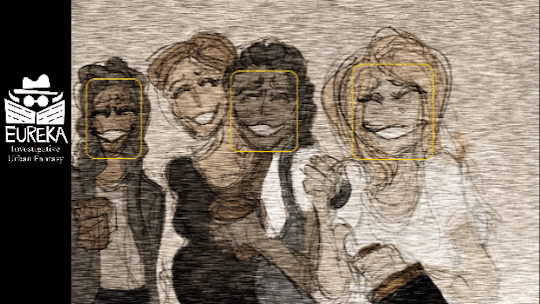
Eureka: Investigative Urban Fantasy is kickstarting from right now until May 10th! Back it while you still can!
youtube
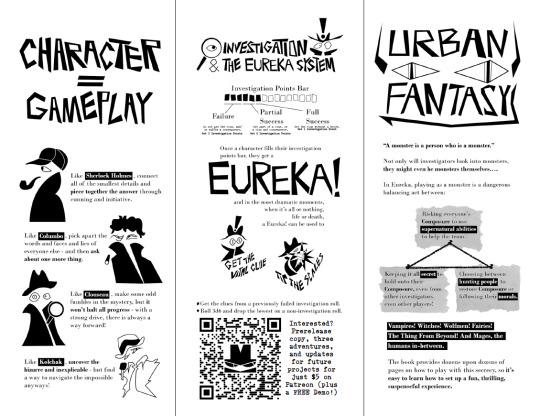
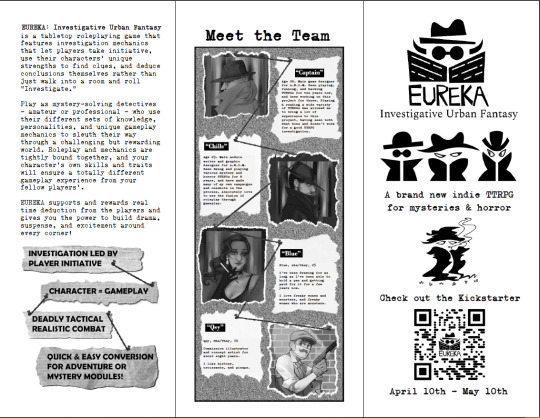
If you want to try before you buy, you can download a free demo of the prerelease version from our website or our itch.io page!
If you’re interested in a more updated and improved version of Eureka: Investigative Urban Fantasy than the free demo you got from our website, subscribe to our Patreon where we frequently roll our new updates for the prerelease version!
You can also support us on Ko-fi, or by checking out our merchandise!
Join our TTRPG Book Club At the time of writng this, Eureka: Investigative Urban Fantasy is the current game being played in the book club, and anyone who wants to participate in discussion, but can’t afford to make a contribution, will be given the most updated prerelease version for free! Plus it’s just a great place to discuss and play new TTRPGs you might not be able to otherwise!
We hope to see you there, and that you will help our dreams come true and launch our careers as indie TTRPG developers with a bang by getting us to our base goal and blowing those stretch goals out of the water, and fight back against WotC's monopoly on the entire hobby. Wish us luck.

#eureka: investigative urban fantasy#ttrpg#rpg#roleplaying#eureka#monsters#tabletop#coc#vampires#vampire the requiem#vampire#vampire core#vampiric#vampire art#vampire girl#vampirism#vampiress#ttrpg art#ttrpg community#ttrpg tumblr#indie ttrpg#ttrpg character#dungeons and dragons#roleplaying games#pathfinder#werewolf#werewolves#lycan#shapeshifter#lycanthropy
101 notes
·
View notes
Note
Hello! I have two (separate) genres im interested in recs for, if youve got them (though combined would be fascinating tbh): Horror and farming sim-like ttrpgs. Horror im sure is fairly common, just not in my circles (which are adventure fantasy based); farming sim though seems like it may be rarer? for that id be interested in either solo or with 2+ people
Theme: Horror Games
Hello friend, I’m going to let one of my older posts do some of the heavy lifting, and point you towards the Small Town Farming collection I put up back in 2022.
You are absolutely right that Horror is much easier to recommend, but I’ll also try and put some quick recs for solo-farming type games at the bottom of this post.
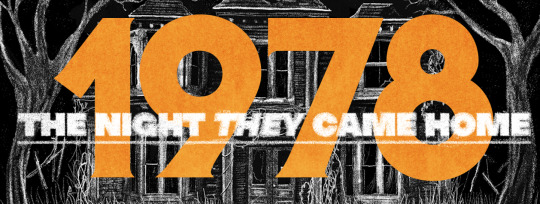

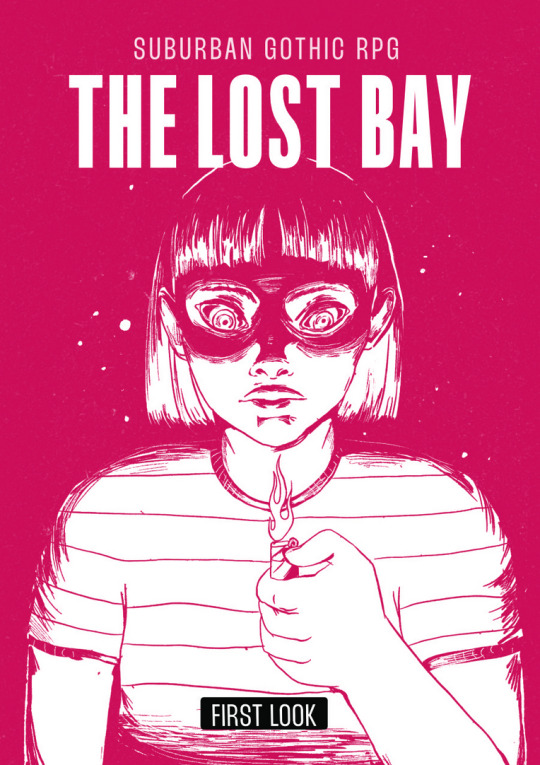
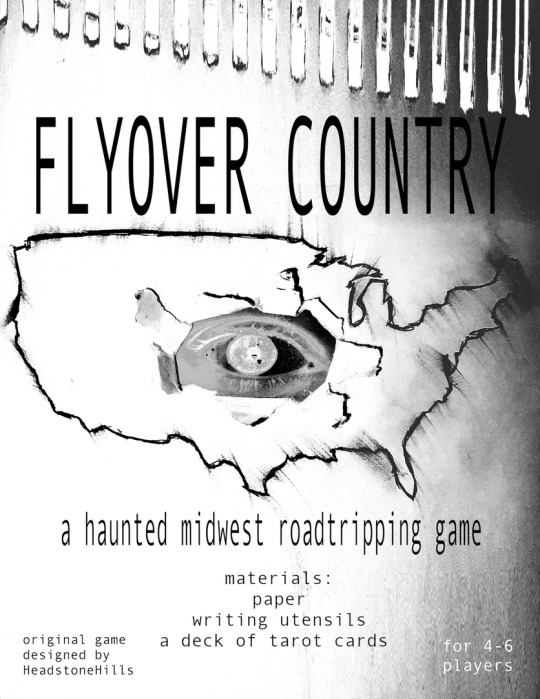
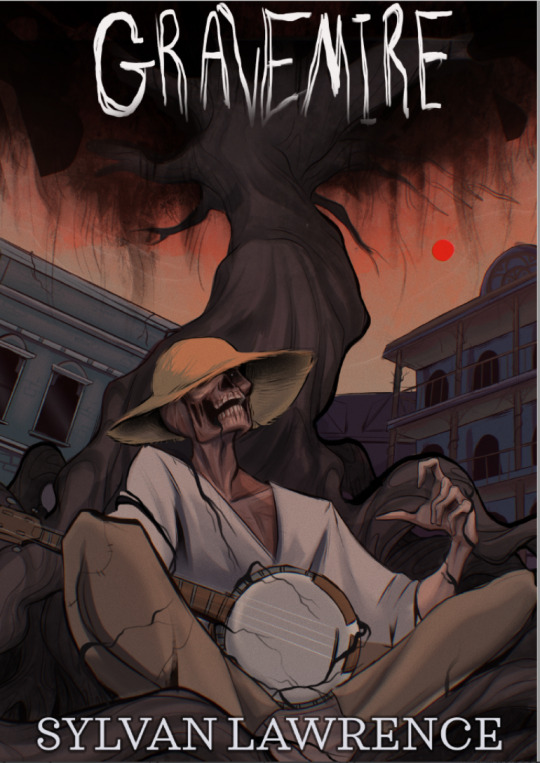
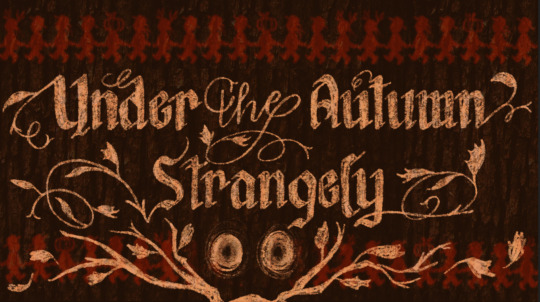
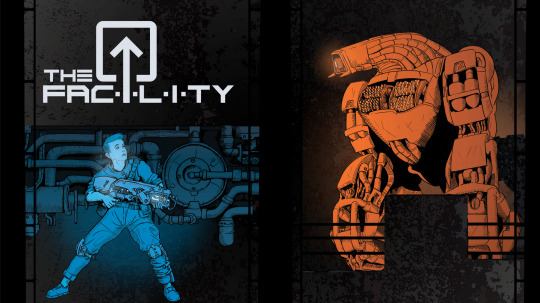
1978: The Night They Came Home, by World Champ Game Co.
1978: The Night THEY Came Home is a 1-2 player horror roleplaying game telling the story of a fateful showdown between Survivor (a clever and resilient person caught up in horrifying circumstances) and Slasher (a legendary force of evil). Using a deck of poker cards, dual rule books, varied resources, and shared play space, players will recount the events of a forsaken Halloween, zooming closer into the haunting folklore of a small Midwestern town and its inhabitants, and culminating in a violent battle for survival.
Here is a game for solo gamers and folks who want a more intimate experience. If you’re a fan of Friday the 13th, this is probably in your wheelhouse! 1978 has a win condition, meaning that either the Survivor or the Slasher will come away as the victor, and the fact that this is also a game that depends on a deck of cards means that I think this might also be a good game for folks who also enjoy card games and board games.
Vast Grimm, by Infinite Black.
EACH MISERABLE DAY THAT PASSES, THE UNIVERSE INCHES CLOSER TO ITS INEVITABLE DEMISE.
Vast Grimm is a stand-alone, art-filled, punk-fueled OSR role-playing game about the few humans remaining in a universe being consumed by growing parasitic würms.
Are you a MAnchiNe ravaged by war, pieced together with remnants of bots and the little flesh left of your body? Maybe you're a twisted biochemist shoving needles into your arms in hopes that this next fix will be the one that saves you and what’s left of humanity? Or perhaps you are a soul survivor, like a cockroach, doing whatever is necessary to stay alive even if it means the rest of your Legion must perish.
This is a game about survival, no matter how gruesome things get, humanity must survive.
If you’ve heard of MÖRK BORG and thought it was cool, and if you want the same kind of energy but in a sci-fi future full of mutant animals and horrific parasites, then you might want to check out Vast Grimm. Your characters will have to ration food, energy and ammo in an unending battle against the worms. This game looks to have a large amount of support, from expanded content, to a number of adventures, to an online character generator. For over-the-top violence, plenty of alien goo, and shambling pathetic characters that look like they might fall apart at any moment, try out Vast Grimm.
The Lost Bay, by IKO.
What Is The Lost Bay? The Lost Bay is a Suburban Gothic tabletop RPG se199X. The Lost Bay is also the name of the setting where the game takes place: a coastal suburb inspired by films and media from the 80s and 90s. In it you play as a young person touched by the Weird, an ancient force that gives you supernatural powers. You roam the Bay with your gang, its malls, arcade games shops, skateparks and beaches, and fight the Horror that has awakened.
The Lost Bay is a game for folks who like their horror drenched in 90’s nostalgia. Characters are archetypal, and each one comes with special powers. Using your powers is exciting and effective, but also brings you closer to Scars, horrible truths about the world around you that will irrevocably change your hometown.
The Lost Bay is great for planning heists, rescuing friends, and trying to get out of dodge when the going gets rough. It’s not about fighting your way out, but more about trying to keep you and your loved ones safe. A lot of game designers have had a riot putting together adventures for this game, which you can check out in this game jam. The link above is for the Kickstarter, but in case you see this game after the campaign finishes, you can also check the game out on Itch.
Flyover Country, by Headstone Hills.
Fields of wheat and corn ripple in the wind, hungry eyes peering out between the stalks. Billboards along the road advertise strange and dangerous attractions. Smiles are too wide, manners too polite, secrets buried too deep. The neon light of a diner glows in the distance, but you may never reach its doors. An empty highway stretches out to the horizon, then wraps back in around itself. This is Flyover Country.
Flyover Country is a Midwest road-tripping horror role-playing game for 4-6 players: one gamemaster, or Watcher, and 3-5 players, or Drifters. It is designed to be played in one setting and without prep. It only requires paper, writing utensils, and a tarot deck.
This is a great option for a group where the GM is uneasy about doing a lot of prep. While one person acts as the Watcher, much of the events in this game are simply generated by drawing tarot cards from a deck. Characters will also draw from the Major Arcana to determine what their secret is - and what special ability it has given them. This is a game of hidden information, and grinding your characters down towards a tragic or grisly end.
Gravemire, by Clawhammer Games.
Gravemire is a tabletop roleplaying game about death, growth, horror, and survival, based in an original mechanical framework and set in the churning waters of the Louisiana bayou circa 1894. Players slip into the roles of outsiders arriving in the town of Scarstone, a rural outpost that has been warped by a terrible transformation known as the Convulsion. Once, Scarstone was surrounded by similar towns. The Bayou once had an end. Now, unknowable numbers of horrors seep through the uncharted backwaters, strange magic contorts reality to its whims, and the settlements that called Scarstone their neighbour jut half-ruined from the mire like bones from a wound. Times have changed.
Gravemire is a pretty brutal game, not afraid to kill your character and steal their soul. The town of Scarstone is a trap; your characters wandered in one day through curiosity or the desire for adventure, but leaving the town isn’t nearly as easy. Characters are built using a point-buy system, and as you play you may acquire more skill - but you will also acquire Aversions, which sap your Willpower and inhibit your ability to muster through the worst of what the game can throw at you.
If you want to check out an abbreviated version of the game, you can check out the Kickstarter playkit here.
Under the Autumn Strangely, by Graham Gentz.
"Under the Autumn Strangely" is a storytelling game of pastoral horror priming with anachronistic Americana set in a land that Never Was.
Inspired by "Over the Garden Wall" created by Patrick McHale, players collaboratively create a world uncanny and old. Codify and encourage tonal clash as the Three Roles meld whimsy, autumnal melancholy, and dread.
Take a wrong turn on a dusty road. Follow the sign past the red barn with peeling paint. Doubt your senses.
Get a little lost.
Welcome to the Never Was.
From what I understand about this game, it works best with three players, as there are three roles that the participants are expected to embody. One person plays the Arcadian, who embodies the landscape and setting. One person plays the Traveller, who acts as a “main” character. One person plays the Terror, which grows to dominate the story. Each role can only add to to one role’s suggestions, and can only deny the other’s. If you want to mix your horror with nostalgia and a romanticized vision of the rural USA, you might want to check out Under the Autumn Strangely.
The Facility, by Galen Pejeu.
You awaken, cold and in the dark. Fumbling around by low blue lights in a coffin shaped pod. You pull yourself out of the box, and in the dark see the faces of others. You are all wearing loose fitting white clothing and laceless shoes. Hospital patients?
You peer into the dark, seeing little but hearing the sound of dripping, running water and distant machinery. You gather what you can, knowing that something is hunting you. It will be here soon.
Wait.
Can you remember who you are?
The Facility is a game for any number of players, taking on the role of ordinary people, stripped of their memories and trapped in a hostile and insane labyrinth of machines and interdimensional weirdness.
The Facility places your crew into an unknown place full of machines that want to kill you. It’s great for high-action scenes, and since your characters have lost their memories, I think the struggle to find pieces of who you are (or were) is a great way to zoom in and make the horror personal. The game is Breathless, so expect your character’s gear and/or abilities to slowly wear down over time, and for the staked to get bigger every time you pause to try and re-stock. If you want a science-fiction twist to your horror game, check out The Facility.
You Should Also Check Out...
My Shudders Rec Post
The Curse of the House of Rookwood, by Nerdy Pup Games.
Nature, Town, Farm, Villagers, by CardboardHyperfix.
Weeds in the Waste, by Meghan Cross
The Wandering Tea Garden, by AP.
Green Thumb, by Curious Frog.
The Bonsai Diary, by Sticky Doodler.
Iron Valley, by M.Kirin.
87 notes
·
View notes
Text

bog tour - countdown to 1 year of games
T MINUS 6 DAYS
Haere mai ki te post! In this little series of 'bog tours', I countdown to my 1 year ttrpg posting anniversary by posting insider trading info about each of my 15 published games, plus one secret content day. What will it be! In today's tour, we're looking at 'Wetland Natures in Wanderhome'.
'Wetland Natures in Wanderhome' is third party content for Wanderhome by Jay Dragon! It is a collection of 6 different natures about different kinds of wetlands.
Thoughts
For those who are unfamiliar, a nature in Wanderhome is a setting! Each time you journey to another place, you pick 3 of the natures (or roll for them!) and use that collection of places in your session(s). Each nature in the book has an overview, three things this place can always do, a picklist of aesthetic elements, and a picklist of folklores. My wetland natures also have a short bit about what that wetland type is!
My first ever game designing was for Wanderhome, so this was a lovely return to that! I have an unpublished playbook called 'the Freed', about being someone who just got released from demonic possession. It was written during a time where I was regularly having a delusion about that very thing, so it was quite heavy in tone. I might go back and try to make it a little more about freedom and joy and rediscovery instead, now that that's not a common delusion for me anymore.
This was inspired as I was rereading through the Wanderhome rulebook for the 3000th time, and coming across the swamp nature in the base rules, I was thinking about how it's a particular theme to the swamp, where it invokes stagnation and being held back. I wanted to offer an alternate more joyful view of a swamp! As I joked once, 'less swamphobic'. However, it's just a different vibe!
It was a bit of a challenge to come up with different things about each type, it was definitely a lot of thinking about points of difference. Which between swamp and bog was particularly hard.
Fav parts
The ephemeral wetland's move of 'Cause anticipatory grief.'
Also in the ephemeral wetland's folklores of 'The Eternally Luminescent Jellyfish' and 'The Bear Who Witnessed It All'.
The Swamp's folklore of 'The Boardwalk That Leads To The End Of All Things'. (Folklores are fun to write!)
Stats
'Wetland Natures for Wanderhome' has 250 views (13th highest) and 53 downloads (12th highest). It has 2 ratings and is in 29 collections (8th highest). Pretty much all of the collections are people's Wanderhome collections!
'Wetland Natures for Wanderhome' is a collection of 6 third party natures for the wonderful game, Wanderhome. Get it for $1USD or use on of the functionally unlimited free community copies here!
Tomorrow's bog tour game is 'How to Survive: a one word rpg'. See ya then!
11 notes
·
View notes